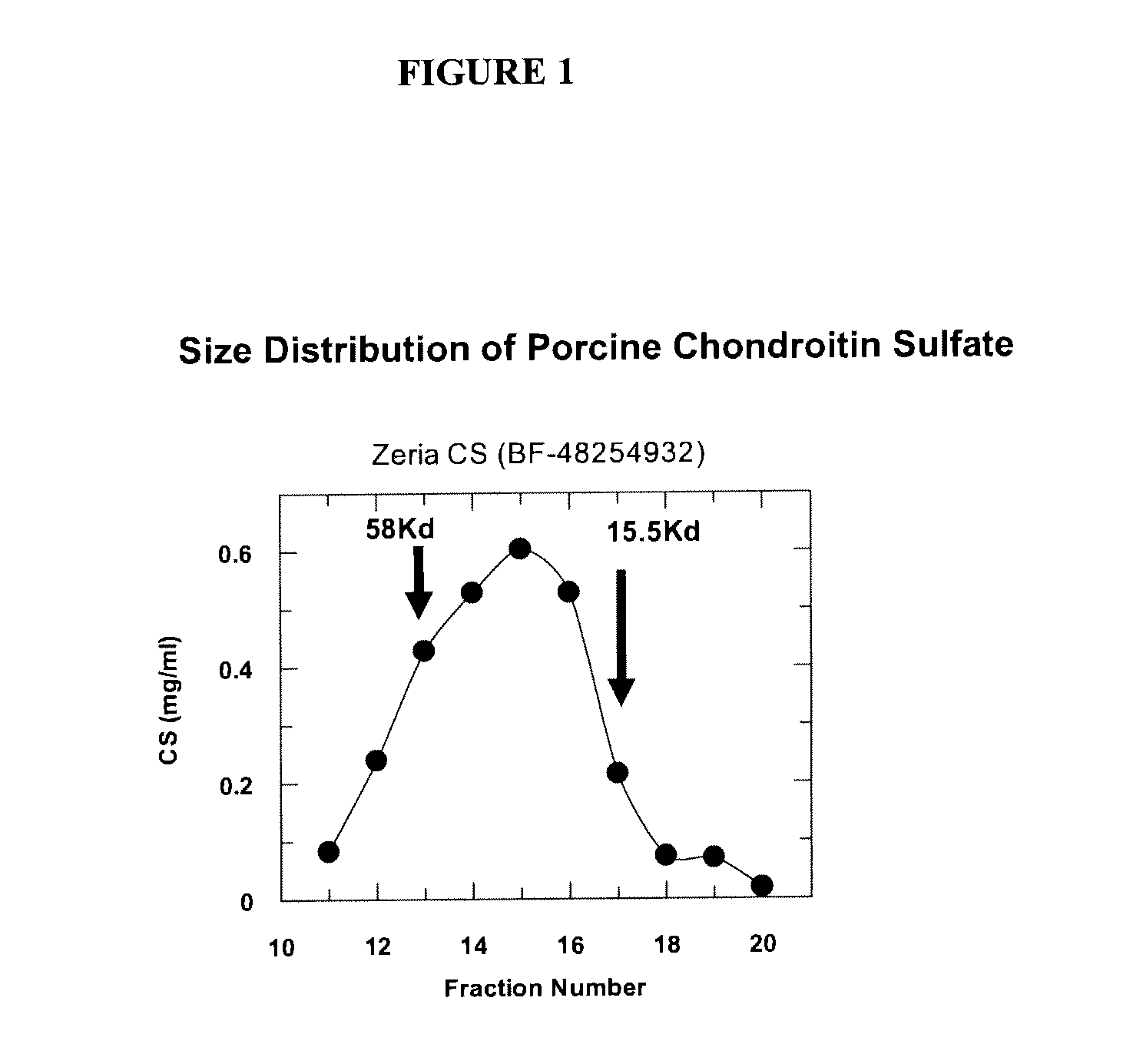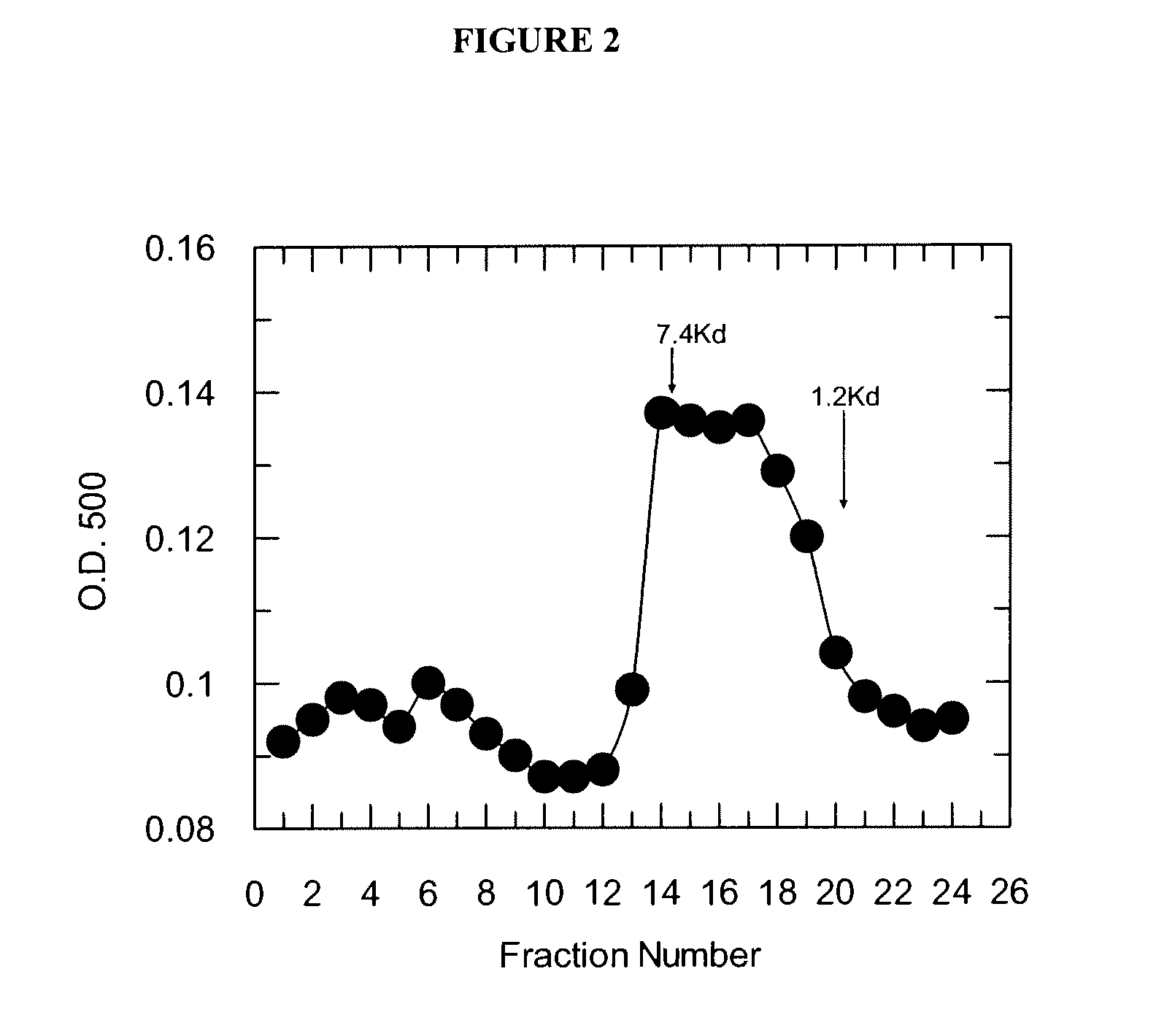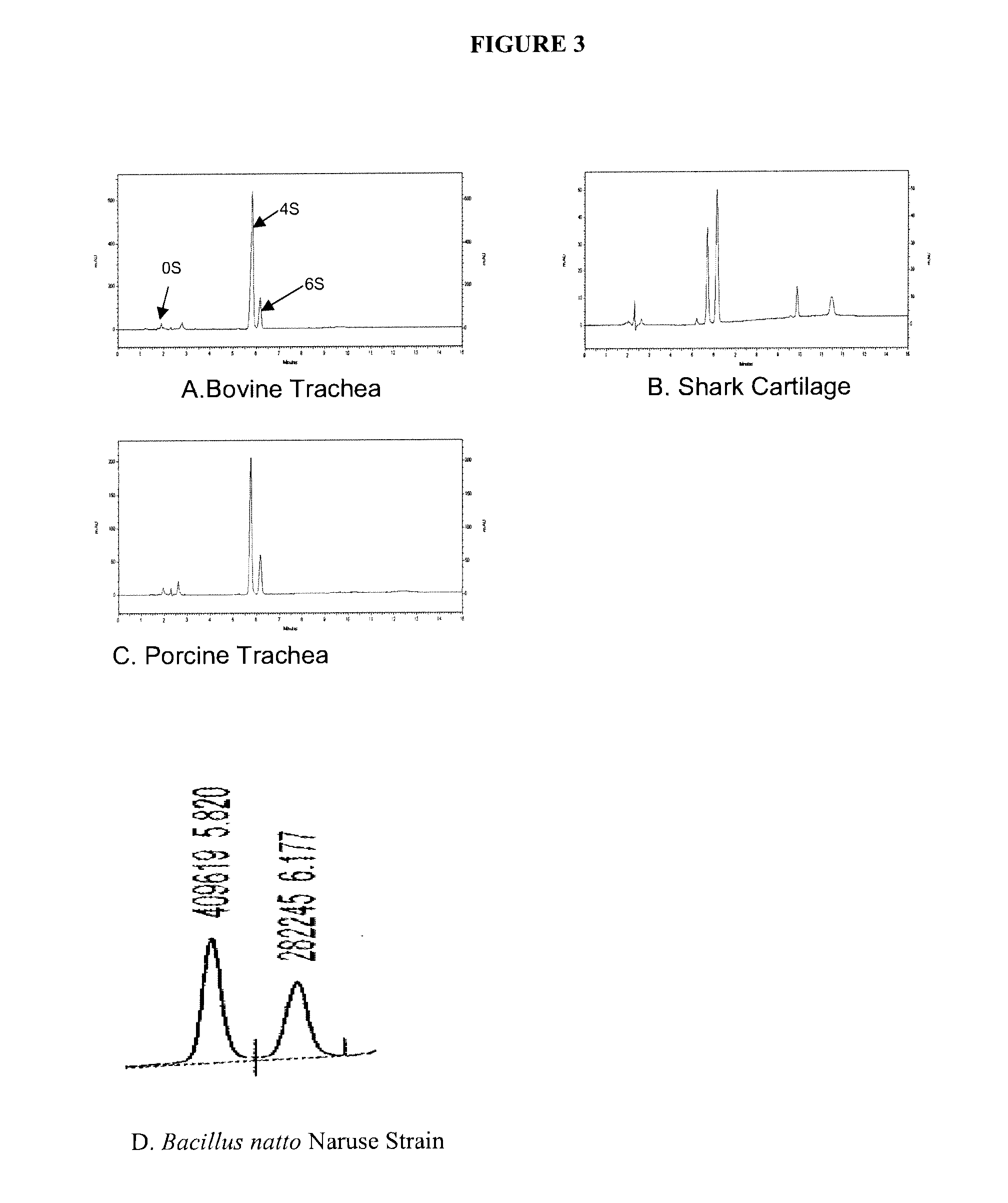Microbial-derived chondroitin sulfate
a technology of chondroitin and sulfate, which is applied in the field of chondroitin sulfate, can solve problems such as serious side effects
- Summary
- Abstract
- Description
- Claims
- Application Information
AI Technical Summary
Benefits of technology
Problems solved by technology
Method used
Image
Examples
example 1
Dimethylmethylene Blue (DMMB) Assay for CS
[0056]Many versions of the DMMB assay exist. The DMMB assay described herein has good specificity for CS, and does not detect keratan sulfate, dermatin sulfate, hyaluronic acid or other polymers such as protein or DNA, due to the low pH and high salt concentration in the assay. Thus, the assay can be utilized to determine the amount of CS in crude samples. See, e.g., Farndale et al., “Improved Quantization and Discrimination of Sulphated Glycosaminoglycans by Use of Dimethylmethylene Blue,”Biochemica Et Biophysical Acta 883 173-77. (1986); Davies et al., “Characterization and Purification of Glycosaminoglycans from Crude Biological Samples,”J. Agric. Food Chem. 56: 343-48 (2008).
[0057]Materials: Dimethylmethylene blue (DMMB) hydrochloride can be purchased from BioChemica International (Melbourne, Fla.). (An alternative source is 1,9-dimethylmethylene blue hydrochloride from Polysciences, Inc. (Warrington, Pa.)). Sodium chloride and glycine c...
example 2
Isolation of Bacteria-Derived CS
[0061]Sterile nutrient broth (DIFCO), 100 ml, is inoculated with a small portion (about 1 g) of natto obtained from a grocery store. The culture is incubated at 37° C. with shaking (200 RPM) overnight (about 14 hours). The culture is centrifuged at 3000 g for 30 minutes to pellet bacteria cells. The clear culture is removed and assayed for the presence of CS-like compound by the DMMB assay described above. The culture media is determined to contain 0.2 g CS / L (or CS-like compound / L).
example 3
Determination of CS Size by Size Exclusion Chromatography
[0062]The size of CS is measured by size exclusion chromatography using a Superdex 200 10 / 300GL column and an Akta Explorer FPLC chromatography system (GE Healthcare). Sample (0.5 ml) is injected on the column and the column is run at 0.1 ml / min in 10 mM Tris HCl (pH 8.0) buffer. Protein is monitored at O.D. 280 nm and CS is monitored at O.D. 215 nm. Fractions are collected (1 ml) and assayed for the presence of CS by the DMMB assay. The molecular size is estimated by a pre-calibration of the column with standard proteins of known size (GE Healthcare).
[0063]FIG. 1 shows the results of an analysis of the size distribution of porcine CS by size exclusion chromatography, plotting CS content as compared to fraction number. The molecular weight markers are an extrapolation from a calibration profile and linear regression line which relates elution volume (or fraction number) to molecular weight in kilodaltons (Kd).
[0064]FIG. 2 show...
PUM
| Property | Measurement | Unit |
|---|---|---|
| molecular weight | aaaaa | aaaaa |
| molecular weight | aaaaa | aaaaa |
| molecular weight | aaaaa | aaaaa |
Abstract
Description
Claims
Application Information
 Login to View More
Login to View More - R&D
- Intellectual Property
- Life Sciences
- Materials
- Tech Scout
- Unparalleled Data Quality
- Higher Quality Content
- 60% Fewer Hallucinations
Browse by: Latest US Patents, China's latest patents, Technical Efficacy Thesaurus, Application Domain, Technology Topic, Popular Technical Reports.
© 2025 PatSnap. All rights reserved.Legal|Privacy policy|Modern Slavery Act Transparency Statement|Sitemap|About US| Contact US: help@patsnap.com



